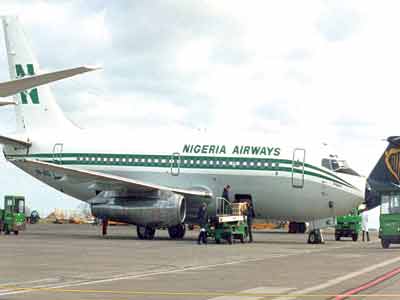Mr John Tayo, Director of Air Traffic Services, NAMA, says the newly installed Aeronautical Fixed Telecommunication Network (AFTN) has been designed to utilise robust global satellite facilities.
Tayo disclosed this on Wednesday during a sensitisation workshop organised by the Nigerian Airspace Management Agency (NAMA) on the newly installed AFTN across 26 airports nationwide.
The News Agency of Nigeria (NAN) reports that the workshop, held in Lagos, was designed for both technical and operational staff of the agency.
NAN also reports that AFTN is a global, government-regulated system enabling reliable, rapid exchange of essential operational messages between aviation authorities and air traffic management centres.
It transmits flight plans, NOTAMs, meteorological data, and distress messages, serving as the backbone of traffic management while ensuring flight safety and operational efficiency worldwide.
Tayo said the new installation aligns with NAMA’s statutory mandate to provide safe, reliable, and efficient air navigation services across Nigerian airspace and beyond.
According to him, the project represents a bold step towards modernising Nigeria’s aeronautical communication infrastructure in line with global aviation requirements and standards.
He explained that although the system still runs on the X.25 protocol, it now leverages stronger, more dependable, and advanced global satellite facilities.
Tayo stressed that the improvement ensures wider coverage, enhanced efficiency, and more reliable transmission of essential communication between aviation stakeholders across the network.
“Importantly, it is tailored for Aeronautical Communication operations and doubles as a dependable alternative to the Air Traffic Service Message Handling System (AMHS),” he said.
He emphasised that AFTN continues to serve as the backbone of aeronautical communication globally, guaranteeing continuity, interoperability, and reliability across international air traffic management systems.
Tayo highlighted that the system ensures timely dissemination of meteorological data, urgent messages, and reduced communication delays, improving efficiency in air traffic management nationwide.
He further noted that AFTN promotes global interoperability by fostering seamless communication between Nigeria and other ICAO member states, reinforcing Nigeria’s integration into the global aviation community.
According to him, the system also provides backup to AMHS. While AMHS is next-generation, AFTN remains a reliable fallback to guarantee operational continuity.
He explained that installations across 26 airports nationwide will further expand national coverage and enhance the overall safety of air navigation services in Nigeria.
On the workshop objectives, Tayo said it would familiarise technical and operational staff with hands-on training, system features, and functionalities of the newly installed AFTN.
He added that it would strengthen staff capacity to manage and troubleshoot the system, while promoting knowledge sharing and best practices for optimal system performance.
The workshop also sought to stress the strategic importance of aeronautical communication in supporting NAMA’s vision for safe, efficient, and cost-effective air navigation services.
Tayo described the AFTN modernisation as proof of NAMA’s commitment to safety, efficiency, and technological advancement within Nigeria’s growing aviation sector.
“However, the true value of this infrastructure lies in how well we operate and maintain it,” he said.
He urged staff to demonstrate professionalism, dedication, and openness, stressing that together they could build a communication system matching the highest global standards






